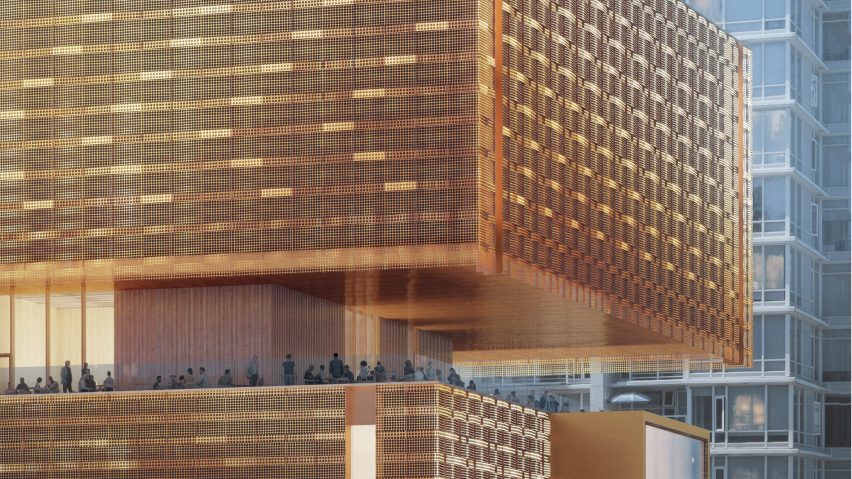
Herzog & de Meuron reveals second Vancouver Art Gallery redesign with woven copper-effect facade
Swiss studio Herzog & de Meuron has revealed its second redesign for a new building at the Vancouver Art Gallery after the project was pledged a nine-figure donation from a property developer.
The architecture firm has revised the massing and facade of the proposed building, opting for a copper-coloured woven metal covering the wooden soffits and structural elements underneath.
Horizontal bands of perforated copper-toned metal would be intertwined with shaped vertical rods to produce an effect similar to weaving fibres.
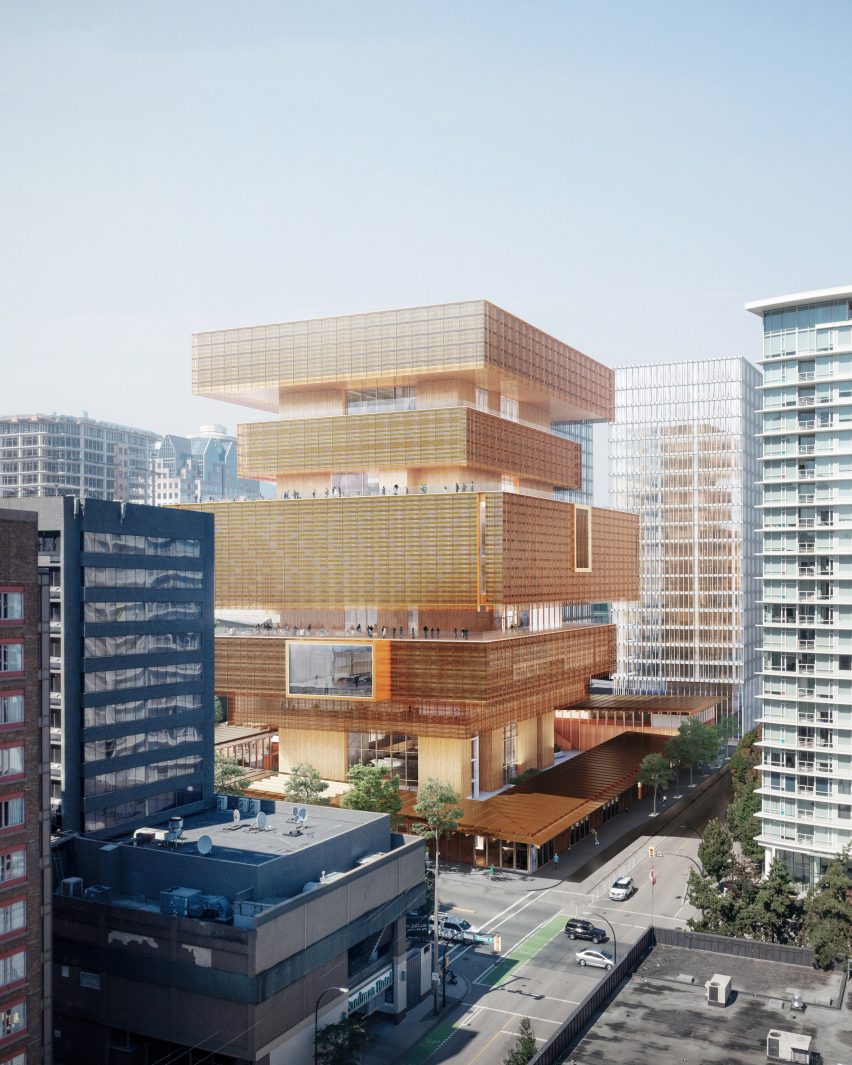
"Both wood and copper are equally present and visible," said Simon Demeuse, partner at Herzog & de Meuron.
"The copper skin has a veil-like quality; a texture and lightness which, like traditionally woven textiles, changes its appearance depending on the vantage point of the observer and the time of the day, creating a dynamic visual experience."
This "textured human-scaled facade" will help to make the large structure, set to stand 68 metres tall with 45,000 square metres of floor space, "approachable", he added.
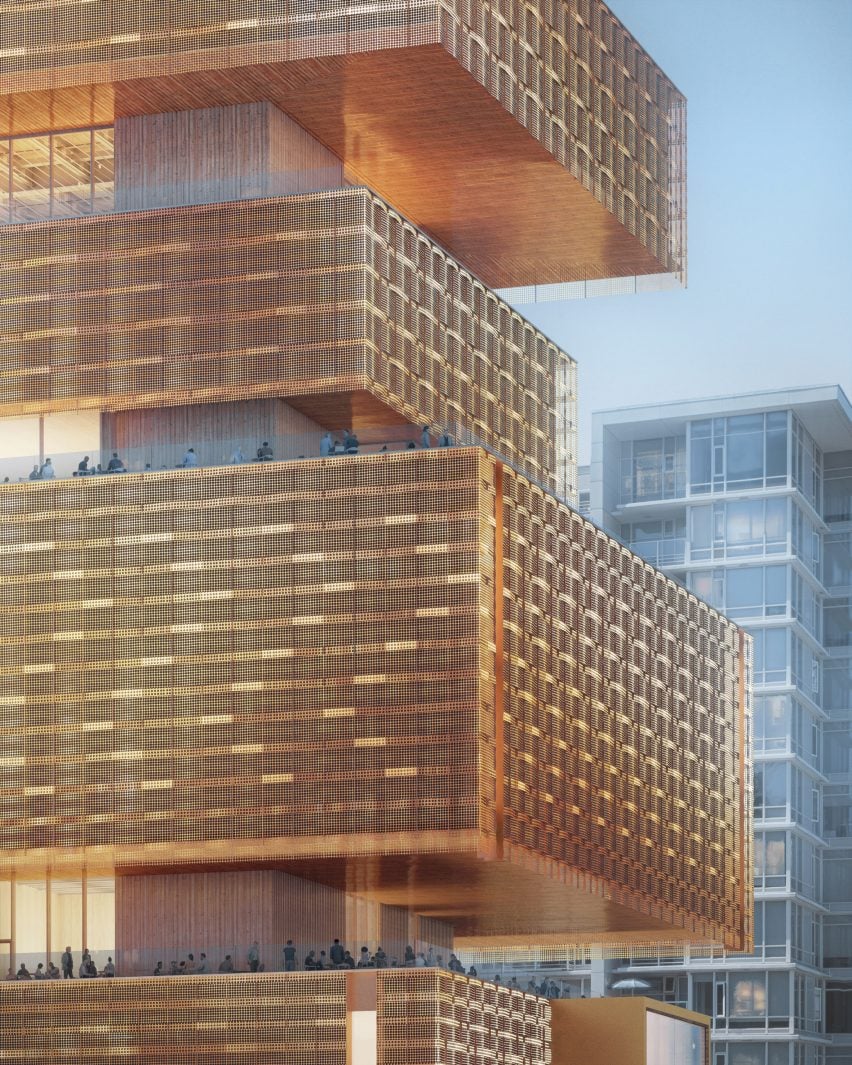
Conversations with local artists led to the idea of using copper, the studio said, with the metal significant to First Nations peoples in British Columbia.
Skwetsimeltxw Willard 'Buddy' Joseph, one of four Indigenous artists who have been working as design consultants on the project since March 2021 and elder-in-residence at the Vancouver Art Gallery, said the proposed building exterior "represents spiritual energy and protection".
The building itself is proposed to be made using mass timber construction methods and resemble a series of symmetrical stacked boxes varying in size, with minimal mass at the bottom and larger volumes concentrated higher up.
Herzog & de Meuron was appointed to design a new building for the Vancouver Art Gallery in 2014.
Its initial vision was for the building to be clad in wood in an attempt to tie in with British Columbia vernacular, but in 2019 the studio released new images where the wood had been swapped for rows of glass cylinders.
This latest revision to use copper instead was announced as the gallery announced the project will receive a $100 million CAD gift from the Audain Foundation, a funding organisation co-founded by housebuilding mogul and Vancouver art collector Michael Audain.
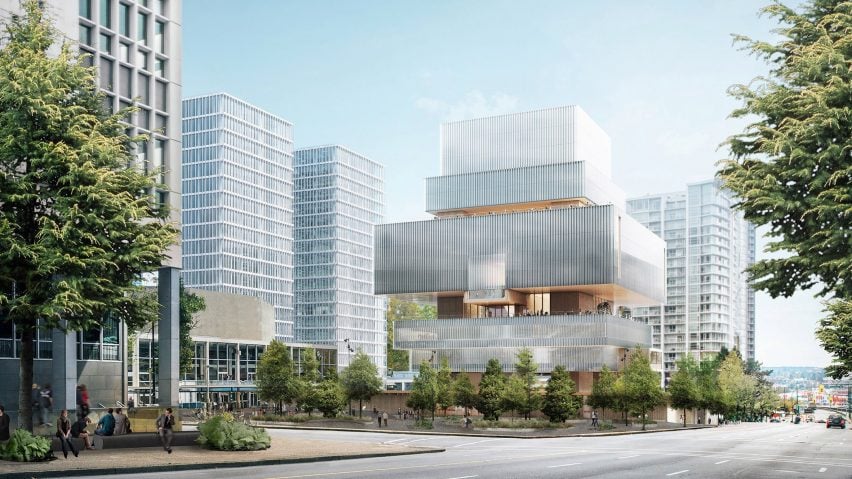
It represents the largest single cash donation to an art gallery in Canadian history, the Vancouver Art Gallery claimed.
"We hope the splendid new building will work well to exhibit the work of our leading artists as well as introduce youngsters to the wonders of art," said Audain.
Previously, the Chan family made a $40 million CAD donation to the project with the building set to be named the Chan Centre for the Visual Arts in recognition.
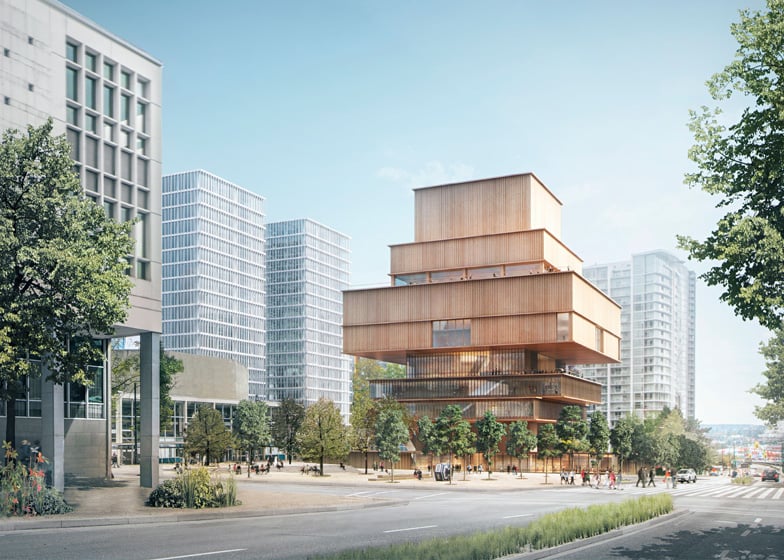
But the gallery is still seeking to raise another $160 million CAD to fully fund the centre, expected to cost $350 million CAD in total.
The new building will sit seven blocks away from the original Vancouver Art Gallery on a downtown site currently used as a car park. It will be the first gallery in North America to meet Passive House energy efficiency standards.
It will more than double the gallery's existing exhibition space to accommodate its growing art collection and also include art storage, a theatre, a library, studios and classrooms all around a courtyard open to the public.
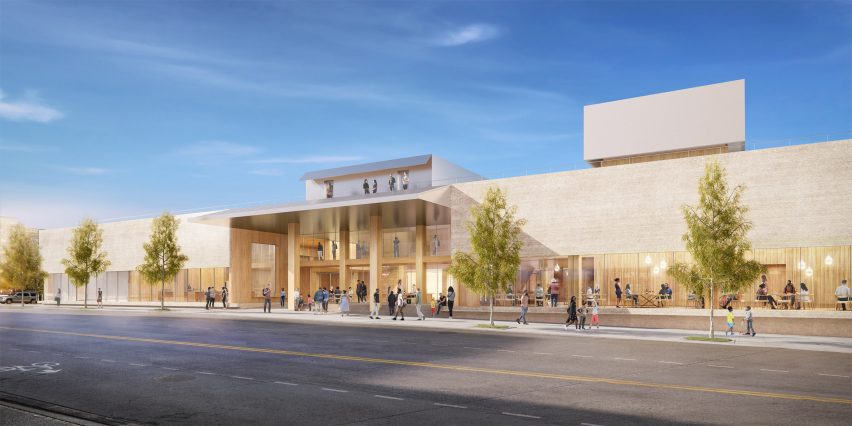
The Vancouver Art Gallery was founded in 1931 and is known for giving special attention to Indigenous artists and the arts of the Asia Pacific region.
Herzog & de Meuron's design for the new arts building has been developed with help from Vancouver studio Perkins & Will.
Among the Swiss practice's extensive back catalogue of high-profile projects are the Switch House extension to the Tate Modern in London and the ST/SongEun Building in Seoul.
Last week it revealed plans for an earth- and glass-clad building housing the Memphis Brooks Museum of Art.
The renderings are courtesy of Herzog & de Meuron.